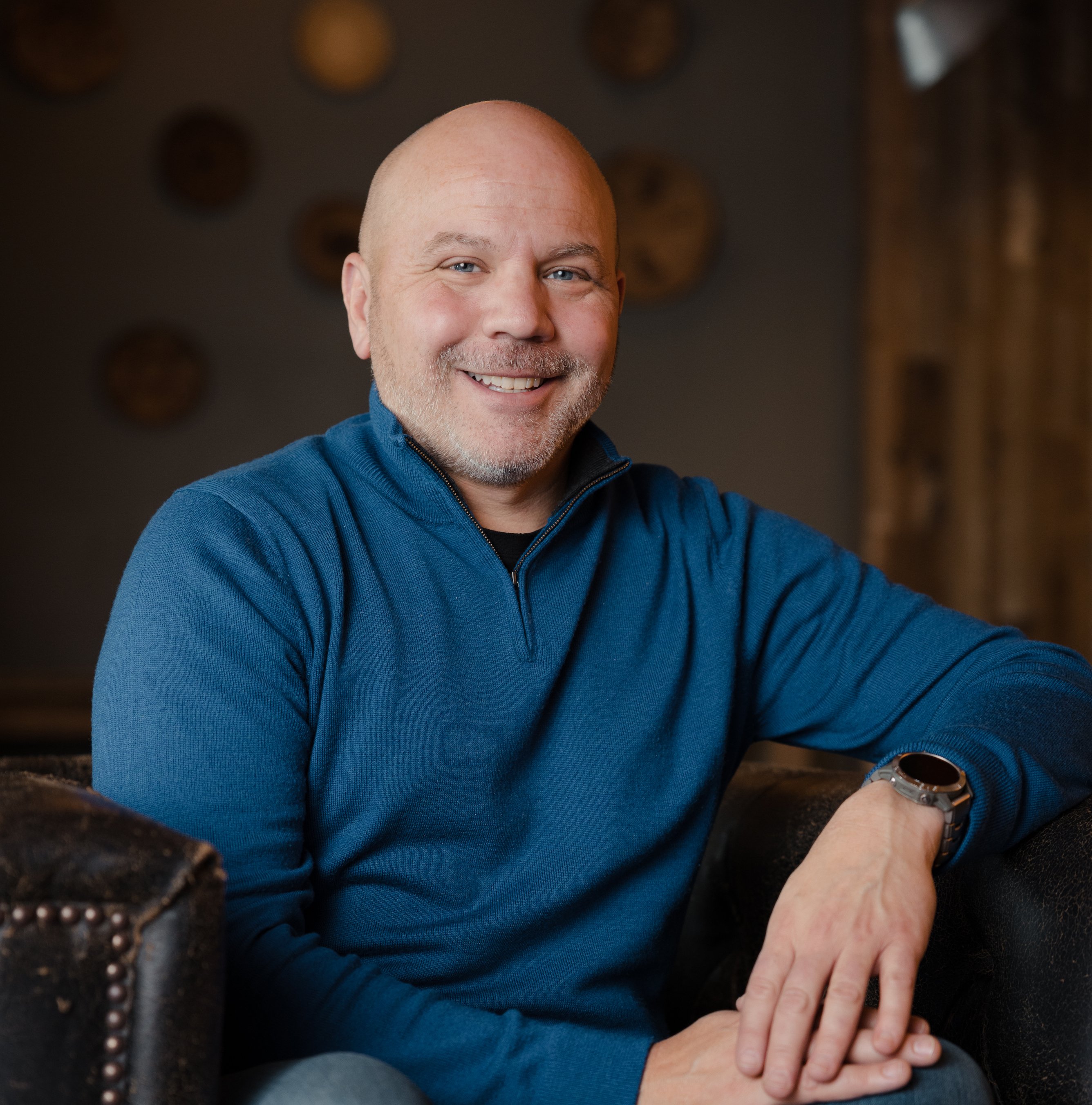Gain Traction with IDS® from EOS®
So many businesses struggle with the same Issues meeting after meeting, month after month. It often feels like an endless game of Whac-A-Mole, each meeting trying to solve the same issues. However, organizations running on the Entrepreneurial Operating System® (EOS) break through ineffective monotony and tackle Issues once and for all. How? Using a proven tool to knock down the issues and seize the right opportunities — the Issues Solving Track™.
This tool relies on two disciplines to transform your business: IDS and the Issues List. If you need help understanding the EOS IDS process or are relatively new to EOS and want to see how it can help you identify, discuss, and solve Issues, keep reading. Mastering the Issues Component®️ is a straightforward way to get your business to achieve its vision.
Key Points:
- Truly solving Issues is what makes some teams great
- You need open and honest communication for the EOS IDS process
- In EOS, IDS stands for identify, discuss, and solve
What Is IDS in EOS?
The Issues Solving Track is where the meeting magic happens. IDS — identify, discuss, and solve — is a systematic methodology for resolving Issues. First, you identify the root problem. Next, you discuss it openly. Finally, you solve it with actionable steps.
EOS Implementers will be the first to tell you that many of the leadership teams they begin working with are stuck in a constant loop of discussing the same Issues over and over again. They rarely practice the process's first and third steps — identifying and solving.
Dean Tompkins, Integrator™ at Payne and Tompkins, recently shared that when they began their EOS journey, he resisted IDS because he had a system he already liked. However, after seeing its simplicity and the outcomes his team began to achieve, embracing IDS was an obvious conclusion.
Trust is paramount to this aspect of the Issues Component. As Gino Wickman explains in Traction©, "Trust creates an open culture in which everyone feels comfortable talking about Issues as they arise."
To succeed with IDS, EOS teaches another discipline — the Issues List.
Generating a Great Issues List Powered by Ninety
The essential first step of the Issues Solving Track is to identify, document, and prioritize your Issues. Compiling all the barriers and opportunities on the path to your Vision is the purpose of your team’s Issues List. However, we seldom know when an Issue will arise and where we will be when it happens. That's one of the superpowers of the Ninety software: allowing instant capture of Issues as they arise.
During weekly Level 10 Meetings, you’ll discuss and solve the highest-priority Issues to keep your team moving forward.
There are three types of Issues Lists your organization will maintain:
- Long-Term — Documented in your Vision/Traction Organizer® (V/TO®) for discussion after your current quarter. These Issues may turn into Rocks during a future quarterly meeting.
- Leadership Team — These Issues concern strategic decisions involving the whole company.
- Departmental and Team — Keep anything involving a specific department or team off the leadership team’s list and move them to the relevant team’s level.
At the beginning of the EOS implementation, teams often say, "We don’t have that many issues." The reality is that they do. A simple exercise to uncover those issues is to take five quiet minutes to answer this question: What's working in the business today, and what’s not working?
If you consistently resolve items off your Issues List, your team members will see the value of meeting weekly as a team. With Ninety, you can understand the amount and priority of Issues on your list. IDS them as a team, quickly create a To-Do, and mark the Issue solved.
The Mechanics of IDS
In EOS, the IDS process is the gear that moves you through the Issues Solving Track. With your Issues List full, the Issues Solving Track reminds us that we don’t need to start at the top. Instead, have your team pinpoint the top three Issues to solve during your weekly meeting, then proceed to IDS — identify, discuss, and solve.
Identify
When a team member raises an Issue, it’s important to remember they may not have identified the root of the team's problem. It’s far simpler to recognize symptoms than the underlying cause. As an Implementer, here’s what I ask to help clarify an Issue:
- Who is accountable for the Issue? (Who is its "owner"?)
- How can you simplify this Issue down to one sentence?
Many EOS Implementers will tell you Issues often boil down to a people problem. Whether someone is in the wrong seat, isn’t embodying your Core Values, or isn’t holding up to their agreements, determining this root cause is essential for moving forward in a way that will create a real impact.
Discuss
This is where most teams go off track. Helpful discussion requires the discipline of the team not to go off-topic (tangents) and instead share experiences and facts that are relevant to the Issue. Most teams find they can boost productivity in their meetings by identifying two key roles: facilitator and note-taker. When someone begins repeating their points, the meeting’s facilitator needs to step in. Assure team members they’ve been heard and assert the importance of not politicking during the Issues Solving Track.
With the Issue thoroughly discussed, it’s time to find a solution.
Solve
The only reason to discuss an Issue is to solve it. Discussion should continue until the Issue’s owner sees the right solution after gaining clarity or through the group coming to an agreement about the way forward.
Most Issues end up as a To-Do for someone (or several someones) to complete. Ninety’s To-Dos tool greatly simplifies this piece of IDS. However, it’s vital to review the solution with the team, with or without software.
Recapping the solution allows everyone in the meeting to connect the dots and see how the solution fits the Issue. If a variable was not addressed, move back to discussion and clarify the loose ends.
The Human Element in IDS
EOS works in part because it recognizes the human element in small and midsize businesses. You aren’t always going to have a consensus on the path forward, but healthy teams can disagree respectfully and look beyond egos and titles to find the resolution most in line with the company’s vision.
Leaders should want their team members to improve continually. You can learn a lot about how your team members think and problem-solve through personality assessments and by overcoming challenges together. Every time you go through the IDS Process and find meaningful resolutions for your team, you’re helping them stay productive and trust they’re in the right place.
Why Some Teams Succeed at IDS and Others Fall Short
The biggest stumbling block to the IDS process is a lack of commitment to the process. In EOS, IDS and the Issues List are the proven processes to follow while mastering the Issues Component.
The teams who commit to the process, maintain open communication, and work for the greater good see the most success from mastering the Issues Component.
You’ll know when IDS is working in your meetings when team members are eager and willing to add Issues to the list, discuss all factors involved, and commit to following through with their solutions. Outside the meeting, this looks like team members focusing on their work instead of being held back by the same problems for weeks on end.
You’ll also know IDS works when team members remark on your meetings' efficiency. Productive meetings solve problems. Unproductive meetings are problems.
Resources for IDS Mastery
Issues are problems that need to be solved, information that needs to be agreed to and communicated, and ideas or opportunities to consider. The Issues Solving Track is a simple tool to identify, prioritize, discuss, and solve your Issues.
Ninety's Issues tool captures all the information you need to IDS with your team during a weekly Level 10 Meeting.
It's Time to Evolve Your Problem-Solving with IDS
There is another level to your problem-solving process within Ninety. Pair the powerful tool of IDS with an intuitive platform that lets you easily prioritize, discuss, assign action items, and move Issues between teams. No more missed discussion topics — just faster, more effective solutions.
I've never heard someone say they wish they would have waited longer to grow faster. Join the thousands of companies running on Ninety. Find your growth gear by starting your 30-day free trial now.
Frequently Asked Questions
What does IDS mean in EOS?
In EOS, IDS stands for identify, discuss, and solve. IDS is an Issues-solving methodology to keep your organization on the path toward executing its vision.
What is the IDS method in meetings?
IDS is an essential step in meetings to remove the highest-priority obstacles in the way of getting work done. This process involves team members adding any Issues to their team’s Issues List, prioritizing them, and moving through the Issues Solving Track until there’s an actionable step to move forward.
What does IDS stand for in Level 10 Meetings?
In a Level 10 Meeting, IDS is the segment where teams identify, discuss, and solve Issues.
What is the EOS IDS process?
The EOS IDS Process is the primary reason to hold meetings — to solve Issues. EOS helps you identify the Six Key Components™ of any organization. Issues are one of these six pillars. Moving through the EOS IDS process allows you to maintain an open dialogue about what’s holding you back and find meaningful solutions.





.jpg?width=500&name=large_SWOT_Analysis_EOS_Blog_Header_1920_x_1080_v2%20(1).jpg)